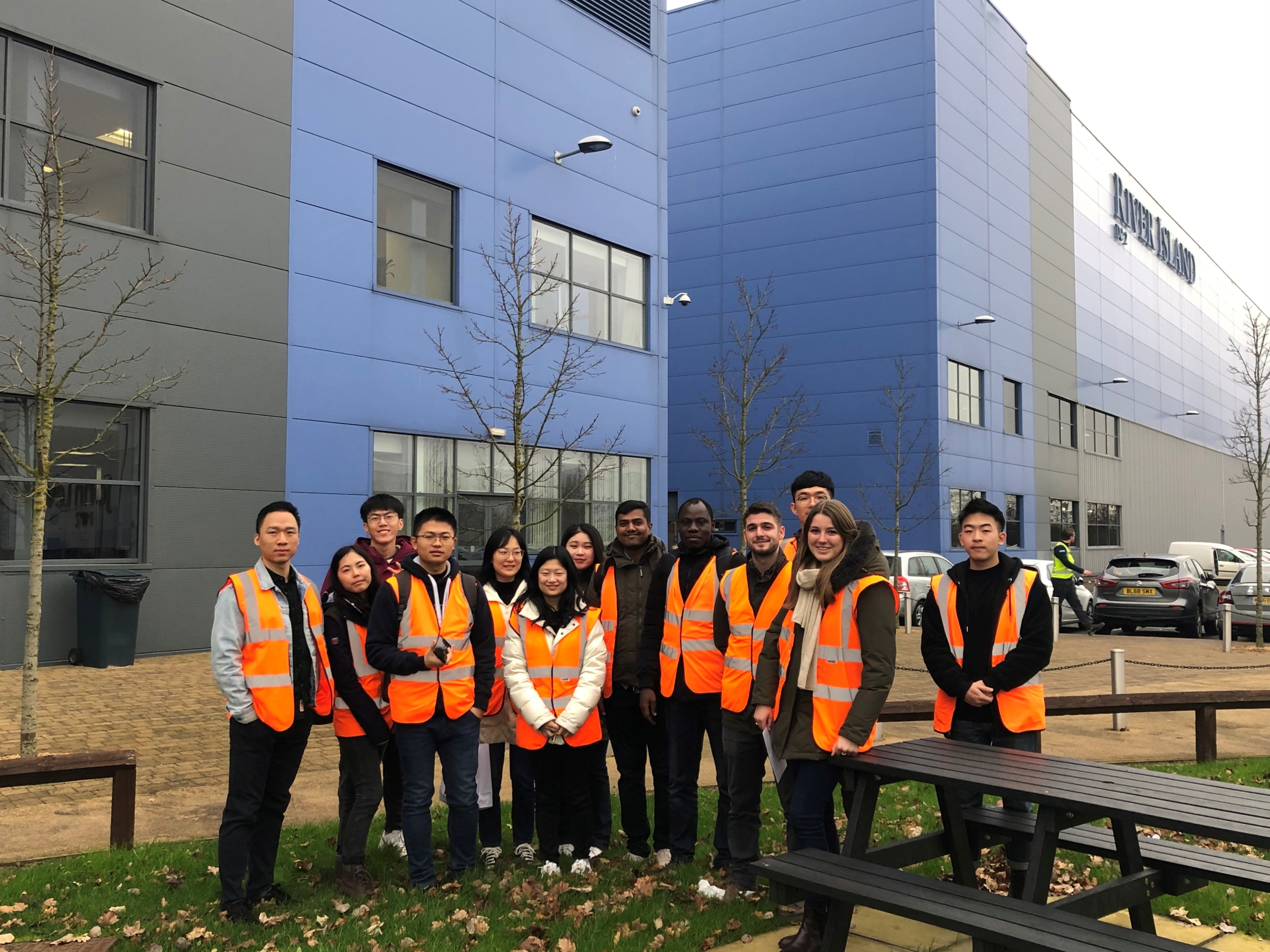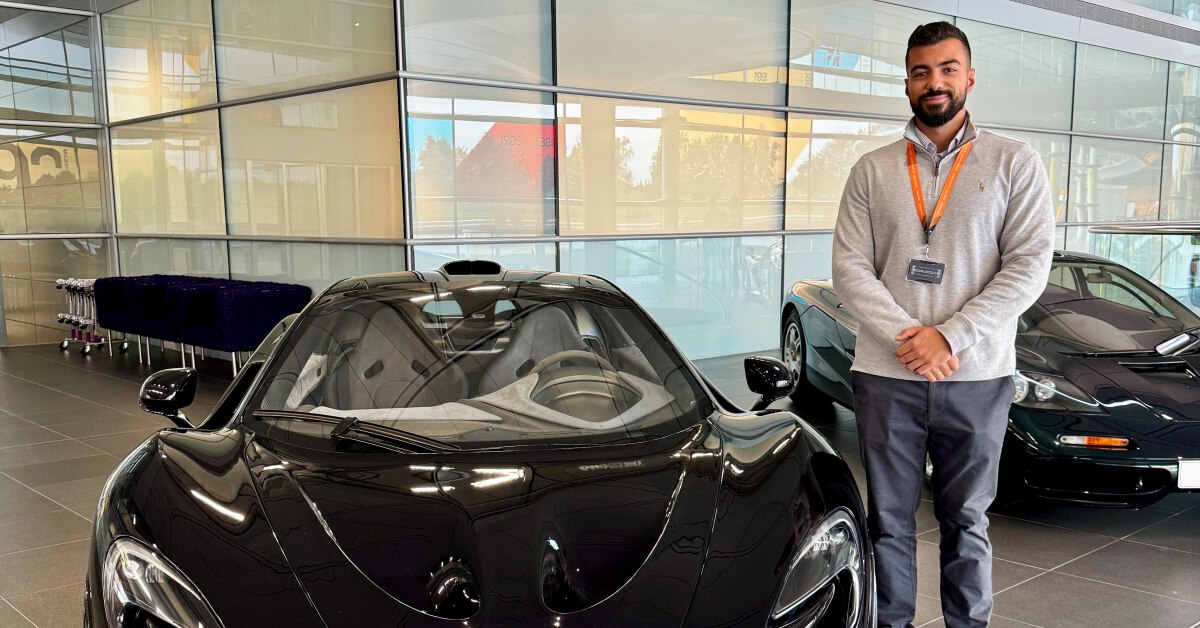A closer look into the warehouse of a high street fashion brand
28/02/2020

As part of our second term of the Logistics and Supply Chain MSc we got the opportunity to join a warehouse visit. In my case we went to the River Island distribution centre (DC). Luckily Cranfield School of Management benefits from being in the middle of a logistically important area in the UK. Hence there are plenty of newly established warehouses around the area of Milton Keynes due to its strategic location close to London.
Even though for me this was not the first chance to have a closer look at warehouse operations, it was still an exciting visit especially regarding the fashion supply chain specific processes that we saw. River Island operates only this one warehouse worldwide which requires the warehouse to serve all the different sales channels, such as online retailing, wholesalers and deliveries to own stores across Europe as well as distribution to international stores. Thus, River Island has developed their products in a so-called “Omni product” manner to create a “one-fits-all (distribution channel)” product.
We were able to get a tour through the 90,000 m2 warehouse which is split into two purpose build warehouses covering all processes from “goods in” until the outbound processes where lorries are loaded with the respective orders bringing fashion to its final customer. For their top 50 stores across the UK, River Island ensures a 24-48 hrs time frame from the moment the cartons enter the warehouse until they are received by the dedicated store.
On a regular day, the warehouse handles around 10,000 incoming cartons which can increase up to 15,000 – 16,000 cartons during peak times. However, no matter how much is received, the company puts its highest priority on the accuracy and quality of the received goods. There are multiple spot checks done based on the company’s accuracy standards also considering for instance the accuracy ranking of the different suppliers that produce the men’s, women’s and kids wear as well as a wide range of shoes and accessories. The credo that is followed here refers to keeping any errors and the number of items with insufficient quality as low as possible from the beginning to have the highest quality output when products are leaving the warehouse.
Besides their accuracy it was also interesting to see that one part of their warehouse is solely dedicated to storing up to 1,500,000 meters of fabrics that are used to produce hanging garments around Europe. This is very unique in the fashion industry where warehouses usually store ready to sell clothing items instead of raw fabric that is delivered to production facilities. Overall the hanging garments were one of the most exciting part for me as they are stored and transported in an entirely different way through the warehouse. In one part of the warehouse there is a railing structure installed at the ceiling where the hangers are connected to. In this way, the products are stored and moved throughout the warehouse until they end up at the outbound loading docks. The hanging clothes are literally flying down from the first mezzanine floor to the ground floor for loading, which was exciting to see.
Lastly, I was especially impressed by the experience of the team that was guiding us. Two of the senior managers took the time to give us a detailed tour covering as many of our questions as possible. Both senior managers combined had more than 44 years of River Island experience and they had both started their careers on the shop floor. The broad knowledge covering both operational and more strategical topics was remarkable.
Thanks again to Cranfield School of Management for making this warehouse visit happen and for allowing everyone to get a better feeling for what is actually happening on the shop floor and adding some practical examples in addition to our regular lecture material.
Categories & Tags:
Leave a comment on this post:
You might also like…
Preparing your work for Turnitin submission
Before submitting your work into Turnitin for similarity checking, if you have used referencing software then you may need to take some important steps first. Mendeley and Zotero integrate with MS Word by embedding field ...
The fast track to supercar engineering: My Cranfield journey
It’s been a dream come true to work on some of the world’s most prestigious supercars – the Aston Martin Valhalla, McLaren 750 & Artura, the GMA T.33. But every successful ...
Automotive Engineering: From student to hypercar innovation at Rimac
We sat down with recent graduate Thomas Perrin, to discuss how his year on the MSc in Automotive Engineering at Cranfield University propelled him from the lecture hall directly into the ...
What this year at Cranfield really meant to me
Every Cranfield journey is unique. In this alumni reflection, Zachea Scicluna shares what her year at Cranfield truly meant, from facing uncertainty to gaining hands-on experience in industry-backed projects. I’ve been reflecting (and delaying) ...
Preparing for assignments and exams?
Sorry! We know it seems a bit mean to mention the exams in January rather than looking forward to the break before it! However, we know many of you will be thinking about your forthcoming ...
Screening for FTSE 100 companies on Bloomberg
So you’re researching an index and need some data on its constituent companies? Bloomberg’s Equity Screening tool makes light work of this, not just for the FTSE, but for indices, exchanges and sectors worldwide. Type EQS ...






